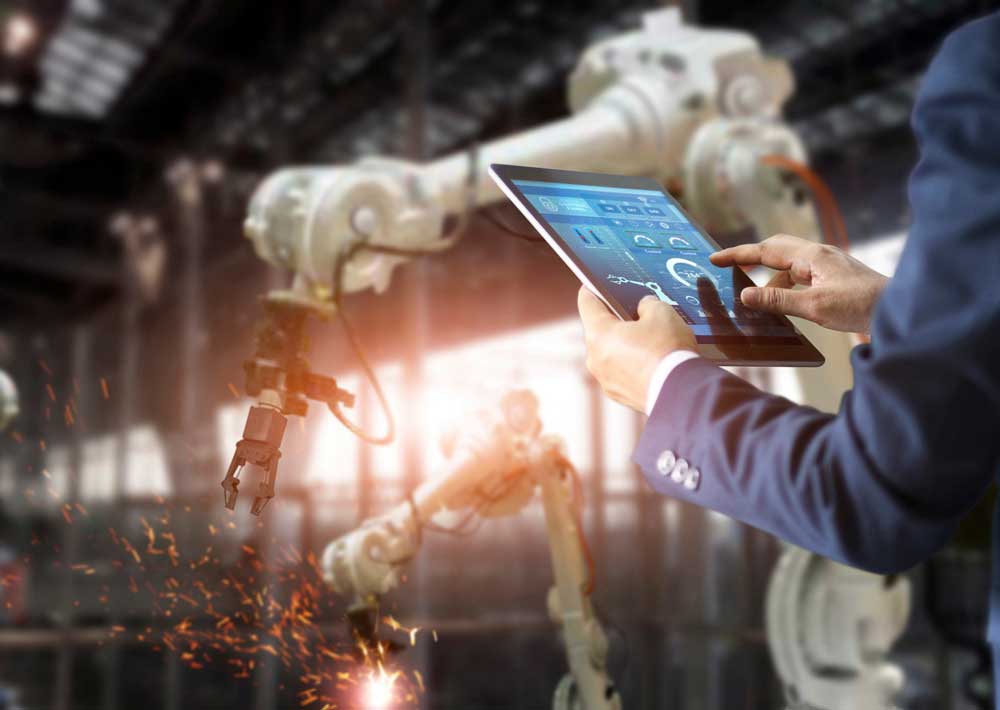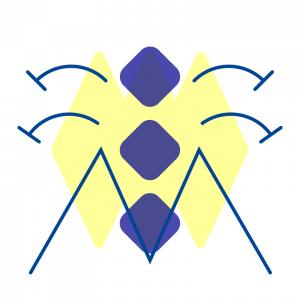
Software-update machine
Installing software updates is common for many technologies. Whether you are talking about a smartphone or a Tesla, almost everyone regularly installs software updates. Still, installing a software update on a production machine today is exceptional. Such a machine is so specifically designed that updating requires a lot of customization and exploration, making this very time consuming and difficult to perform without errors. The consequence is that a production machine can be down for an unpredictable period of time or may later fail in operation, which can lead to dissatisfied customers.
In practice, machines are therefore rarely updated, but are ultimately completely replaced by new machines. Each time this requires a huge investment in money, time, energy, and forms a barrier to being able to keep up with new technologies and worldwide flexibility of market demands.
ITEA3 innovation program
A consortium of High Tech Software Cluster (HTSC) members have been granted an ITEA3 project proposal. ITEA3 is a European strategic research program for the development of software intensive systems and services. The program helps companies to strengthen their international competitive position.

The ITEA3 funding awarded to the HTSC consortium focuses on the ability to allow continuous improvement of machines by means of verified and validated software updates based on operational machine data and artificial intelligence. The consortium consists of High Tech Software Cluster member Cordis Automation, acting as consortium coordinator, together with cluster members KE-works and Eindhoven University of Technology (TU/e), knowledge institute TNO and industry partners Additive Industries and Lely Industries.
The innovation program supports the consortium members in the further development a range of innovative technologies with a total project budget of 5 million euros over a period of 3 years. Cordis Automation has a low-code platform for control software, KE-works provides its product lifecycle management platform, TU/e adds formal verification technology, TNO adds artificial intelligent and other algorithm technologies. Industry partners Additive Industries and Lely Industries are providing the use cases and will use the technology-combination in order to be able to continuously improve their machines by means of software updates.
Software technologies
To make it possible to allow continuous improvement of machines by means of software updates, it is necessary to link together a number of high-tech software technologies. For this reason, the expertise of various leading High Tech Software Cluster companies has been combined in a consortium working together on this topic.
Linking technologies together gives great benefits, such as sccelerate and simplify application development. The low-code platform Cordis SUITE makes it easier and faster to develop control software applications. A proven method that generates error-free code (from the low-code platform).Developing control software applications often takes a long time and is very fault sensitive. As a low code platform, the Cordis SUITE makes it much easier to rapidly develop reliable software. Machine behavior can be translated into a working software application through a visual, model-driven and simpler method.
With this method of software development you visually describe the architecture and desired behavior of the application, so it no longer matters whether embedded controllers or PLCs are used, in other words it is hardware independent.
- Shorten delivery time machine construction
Virtual Commissioning, for machines using for example Siemens NX-MCD or Unity3D, makes it possible to further shorten and optimize the design and construction process. With this technology, commissioning is first done virtually. In this way, design errors become visible at a very early stage and can be fixed early on. As a result, fewer or no adjustments are required during the actual commissioning of the physical machine or when the machine is actually put into operation. - Prevent software errors
With formal verification methods, based on mathematical process algebra, from cluster member Eindhoven University of Technology – TU/e, it will be possible to find design errors in the application made using the Cordis SUITE low-code platform and consequently further optimize the software application. This ensures that the software application meets high quality and safety requirements.
A machine often performs different actions simultaneously and these actions differ per situation. To verify all of these combination of actions for quality and safety in advance, it is necessary to apply formal verification to the design. With this technology, all possible actions and situations are verified. Due to the enormous high number of possible combinations, this cannot be done in the traditional way of testing.
In the next lifecycle stage, when the machine goes into production, the following technologies are applied.
- Big Data & Artificial Intelligence
A detailed, complete and continues log of the internal operational control data is stored during production of the machines. Additionally, using external (5G connected) sensor data together with the operational control data, you can find out exactly what the machine has done, when and during which action.
During the development of the machine software using the low-code platform, all control data will automatically be logged during machine operation. The Cordis SUITE will generate and gather all the operational control data for artificial intelligence applications. Also, the related low-code design data is used as input for artificial intelligence. Combining the two together gives an unique and very rich dataset as input for the machine improvement analysis. Together with knowledge partner TNO, it is determined how the logged operational data, together with the low-code design models, can best be used by artificial intelligence and other algorithm technology in the continuous optimization use cases of the industry partners. - Product Lifecycle Management
Allowing software updates to machines has many benefits but it requires careful management. The ‘KE-chain engineering platform’ from cluster member KE-works tracks all changes and related data sets, maintaining the whole process of continuous lifecycle management of machines. - Industry partners
This new approach is developed together with industry partners Additive Industries and Lely Industries and is therefore applied in practice in two different domains.
With these insights, the machines can be optimized without disturbance of production. A continuous optimization cycle is created in which various high-tech software technologies are linked together in a unique way. This allows a machine to stay up-to-date through software updates and will be ongoing improvement by analyzing logged data with detailed machine information. This will boost the international competitiveness of the manufacturing industry.
Are you curious about the developments of this innovation? You can stay informed via our newsletter.
